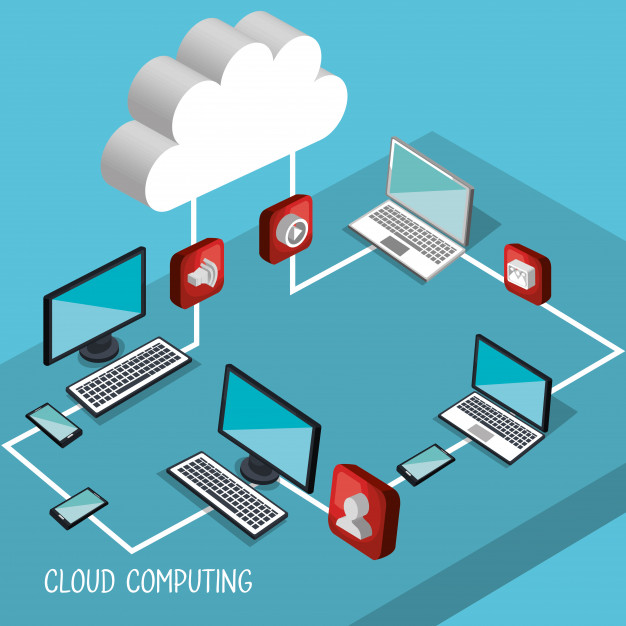The term cloud refers to accessing computers, IT, and software applications via a network connection, often through data centers using the Internet or wide-area networking (WAN).
When used in a business, cloud computing allows the company to manage its computing resources online. Businesses will be able to access their information virtually, developing a flexible way of accessing data anytime, anywhere. Cloud computing is fast to provision the service that you can even gain instant access. Remote users can access cloud resources regardless of the location as long as they have an Internet connection.
Cloud computing has three categories: public, private, and hybrid, depending on who has access to the infrastructure or services. Public-cloud services are available to those who want to lease or purchase the services. Private-cloud services are developed by enterprises for partners and employees use only. Hybrid-cloud services are a combination of both.
Types of Cloud Computing Services
Even though cloud computing has changed over time, it has been divided into four broad service categories that include:
Infrastructure-as-a-service (IaaS)
This basic category of cloud computing services allows you to rent IT infrastructure from a cloud provider on a pay-as-you-go basis. IaaS providers offer medium, large, small, extra-large and memory- or computer-optimized instances, besides offering customized instances, for different workload requirements.
Software as a service (SaaS)
With SaaS, software applications get delivered over the Internet based on demands and subscriptions. You can host and manage software applications and basic infrastructure and take care of any maintenance like security patching and software upgrades.
Platform as a service (PaaS)
This cloud computing service allows cloud providers to host development tools on their infrastructures. It is designed to quickly develop mobile or web apps, without having to worry about setting up or managing the fundamental infrastructure of storage, network, servers, and databases.
Functions as a service (FaaS)
This service provides the ability to deploy what is basically a single function, or part of an application. FaaS is designed to potentially be a serverless architecture. Instead of handling the annoyances of virtual servers, application runtimes, and containers, narrowly functional blocks of code get uploaded and are set to be activated by a particular event.
Benefits of Cloud Computing for Your Business
The five key benefits of cloud computing are:
Pay per use
When used in a business, cloud computing computer resources becomes measurable at a granular level as users need to pay only for the resources and workloads they use.
Workload resilience
Cloud service providers frequently use redundant resources to guarantee resilient storage and keep users’ vital workloads running (mostly across several global regions).
Migration flexibility
Organizations can move specific workloads to or from the cloud or even to different cloud platforms. This can be done as desired or automatically to save money or to use new services as they develop.
Self-service provisioning
Cloud computing allows end-users to spin up computer resources for any type of workload on demand. This prevents the standard requirement for IT administrators to provision and manage computer resources.
Elasticity
Companies can scale up as computing requirements increase and scale down again as the demands decrease. This again prevents the need for huge investments in local infrastructure.
On the whole, cloud computing gives you access to servers, databases, storage, and a wide range of application services over the Internet. A cloud service provider like Zero1Zero Innovations allows you to store your data and applications on scalable platforms, thus enabling your business to run at optimum efficiency.
Zero1Zero for Cloud Services
- Much cheaper than purchasing technology assets
- Critical data is safe in the fortified data center
- Maximized TCO and say goodbye to IT equipment depreciation
- Access everything you need, when and where you need it

